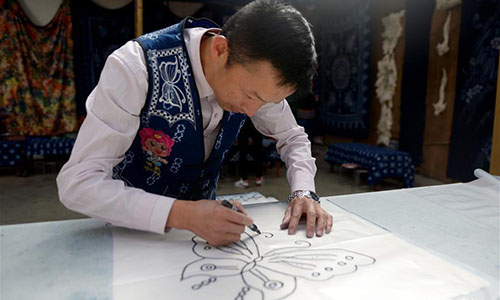
Artisan Duan Shukun works on a tie-dyeing product in Dali, southwest China's Yunnan Province, Nov. 15, 2016. As a traditional folk technique of the Bai ethnic group, tie dyeing was listed in 2006 into state-level intangible cultural heritages. The technique goes through three major steps: making knots, dipping and dyeing, and drying in the sun. The pattern of the cloth is simple and natural, which looks graceful, but not extravagant. Traditional tie-dyeing products are mostly inspired by local scenery and based on blue and white colors. (Xinhua/Li Yan)
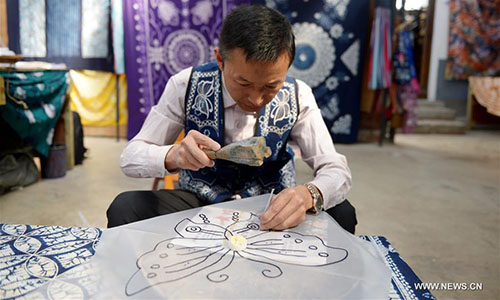
Artisan Duan Shukun works on a tie-dyeing product in Dali, southwest China's Yunnan Province, Nov. 15, 2016. As a traditional folk technique of the Bai ethnic group, tie dyeing was listed in 2006 into state-level intangible cultural heritages. The technique goes through three major steps: making knots, dipping and dyeing, and drying in the sun. The pattern of the cloth is simple and natural, which looks graceful, but not extravagant. Traditional tie-dyeing products are mostly inspired by local scenery and based on blue and white colors. (Xinhua/Li Yan)
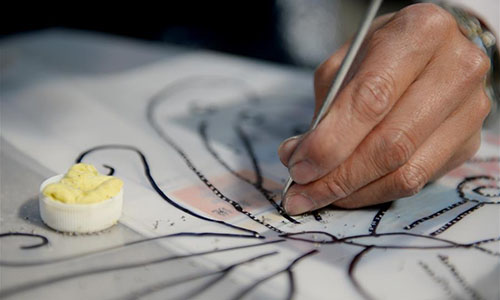
Artisan Duan Shukun works on a tie-dyeing product in Dali, southwest China's Yunnan Province, Nov. 15, 2016. As a traditional folk technique of the Bai ethnic group, tie dyeing was listed in 2006 into state-level intangible cultural heritages. The technique goes through three major steps: making knots, dipping and dyeing, and drying in the sun. The pattern of the cloth is simple and natural, which looks graceful, but not extravagant. Traditional tie-dyeing products are mostly inspired by local scenery and based on blue and white colors. (Xinhua/Li Yan)
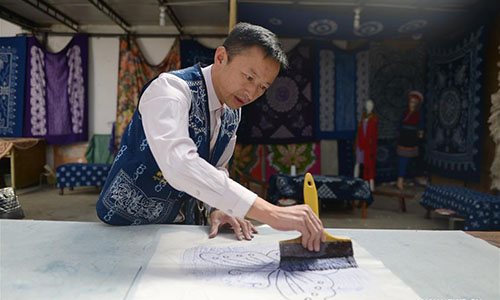
Artisan Duan Shukun works on a tie-dyeing product in Dali, southwest China's Yunnan Province, Nov. 15, 2016. As a traditional folk technique of the Bai ethnic group, tie dyeing was listed in 2006 into state-level intangible cultural heritages. The technique goes through three major steps: making knots, dipping and dyeing, and drying in the sun. The pattern of the cloth is simple and natural, which looks graceful, but not extravagant. Traditional tie-dyeing products are mostly inspired by local scenery and based on blue and white colors. (Xinhua/Li Yan)
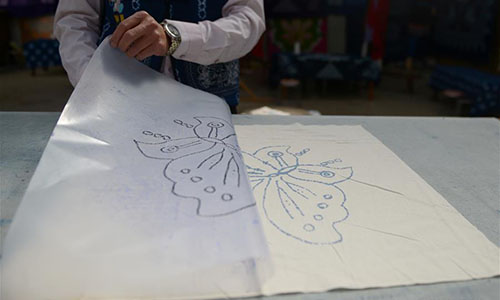
Artisan Duan Shukun works on a tie-dyeing product in Dali, southwest China's Yunnan Province, Nov. 15, 2016. As a traditional folk technique of the Bai ethnic group, tie dyeing was listed in 2006 into state-level intangible cultural heritages. The technique goes through three major steps: making knots, dipping and dyeing, and drying in the sun. The pattern of the cloth is simple and natural, which looks graceful, but not extravagant. Traditional tie-dyeing products are mostly inspired by local scenery and based on blue and white colors. (Xinhua/Li Yan)

Artisan Duan Hua'ai works on a tie-dyeing product in Dali, southwest China's Yunnan Province, Nov. 15, 2016. As a traditional folk technique of the Bai ethnic group, tie dyeing was listed in 2006 into state-level intangible cultural heritages. The technique goes through three major steps: making knots, dipping and dyeing, and drying in the sun. The pattern of the cloth is simple and natural, which looks graceful, but not extravagant. Traditional tie-dyeing products are mostly inspired by local scenery and based on blue and white colors. (Xinhua/Li Yan)
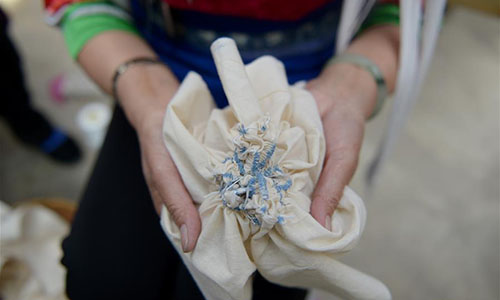
Artisan Duan Hua'ai shows the cloth of a tie-dyeing product in Dali, southwest China's Yunnan Province, Nov. 15, 2016. As a traditional folk technique of the Bai ethnic group, tie dyeing was listed in 2006 into state-level intangible cultural heritages. The technique goes through three major steps: making knots, dipping and dyeing, and drying in the sun. The pattern of the cloth is simple and natural, which looks graceful, but not extravagant. Traditional tie-dyeing products are mostly inspired by local scenery and based on blue and white colors. (Xinhua/Ding Yiquan)
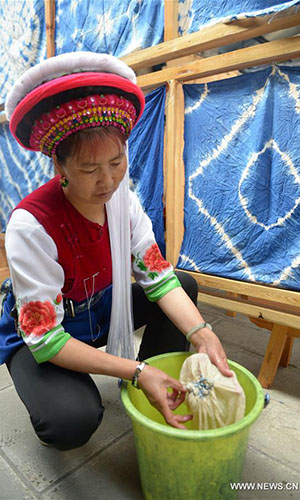
Artisan Duan Hua'ai works on a tie-dyeing product in Dali, southwest China's Yunnan Province, Nov. 15, 2016. As a traditional folk technique of the Bai ethnic group, tie dyeing was listed in 2006 into state-level intangible cultural heritages. The technique goes through three major steps: making knots, dipping and dyeing, and drying in the sun. The pattern of the cloth is simple and natural, which looks graceful, but not extravagant. Traditional tie-dyeing products are mostly inspired by local scenery and based on blue and white colors. (Xinhua/Ding Yiquan)
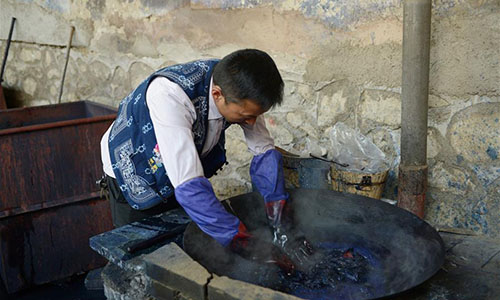
Artisan Duan Shukun works on a tie-dyeing product in Dali, southwest China's Yunnan Province, Nov. 15, 2016. As a traditional folk technique of the Bai ethnic group, tie dyeing was listed in 2006 into state-level intangible cultural heritages. The technique goes through three major steps: making knots, dipping and dyeing, and drying in the sun. The pattern of the cloth is simple and natural, which looks graceful, but not extravagant. Traditional tie-dyeing products are mostly inspired by local scenery and based on blue and white colors. (Xinhua/Li Yan)
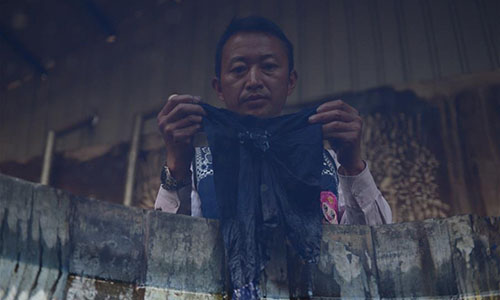
The reversed photo shows artisan Duan Shukun washing the cloth of a tie-dyeing product in Dali, southwest China's Yunnan Province, Nov. 15, 2016. As a traditional folk technique of the Bai ethnic group, tie dyeing was listed in 2006 into state-level intangible cultural heritages. The technique goes through three major steps: making knots, dipping and dyeing, and drying in the sun. The pattern of the cloth is simple and natural, which looks graceful, but not extravagant. Traditional tie-dyeing products are mostly inspired by local scenery and based on blue and white colors. (Xinhua/Li Yan)
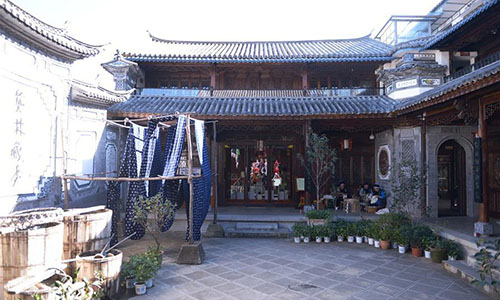
Artisans work on tie-dyeing products in Dali, southwest China's Yunnan Province, Nov. 15, 2016. As a traditional folk technique of the Bai ethnic group, tie dyeing was listed in 2006 into state-level intangible cultural heritages. The technique goes through three major steps: making knots, dipping and dyeing, and drying in the sun. The pattern of the cloth is simple and natural, which looks graceful, but not extravagant. Traditional tie-dyeing products are mostly inspired by local scenery and based on blue and white colors. (Xinhua/Ding Yiquan)
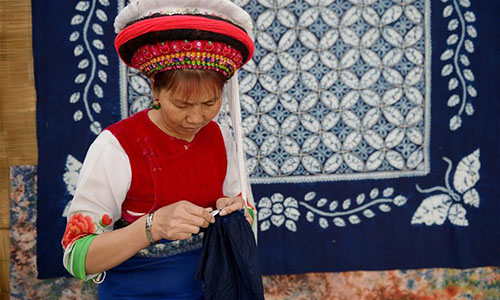
Artisan Duan Hua'ai works on a tie-dyeing product in Dali, southwest China's Yunnan Province, Nov. 15, 2016. As a traditional folk technique of the Bai ethnic group, tie dyeing was listed in 2006 into state-level intangible cultural heritages. The technique goes through three major steps: making knots, dipping and dyeing, and drying in the sun. The pattern of the cloth is simple and natural, which looks graceful, but not extravagant. Traditional tie-dyeing products are mostly inspired by local scenery and based on blue and white colors. (Xinhua/Ding Yiquan)
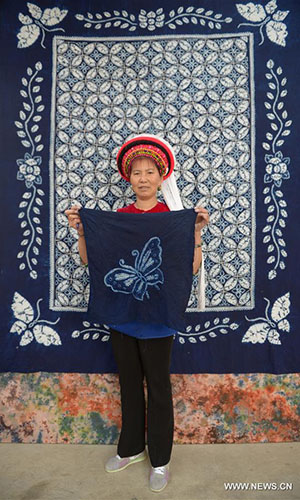
Artisan Duan Hua'ai shows a tie-dyeing product in Dali, southwest China's Yunnan Province, Nov. 15, 2016. As a traditional folk technique of the Bai ethnic group, tie dyeing was listed in 2006 into state-level intangible cultural heritages. The technique goes through three major steps: making knots, dipping and dyeing, and drying in the sun. The pattern of the cloth is simple and natural, which looks graceful, but not extravagant. Traditional tie-dyeing products are mostly inspired by local scenery and based on blue and white colors. (Xinhua/Ding Yiquan)
